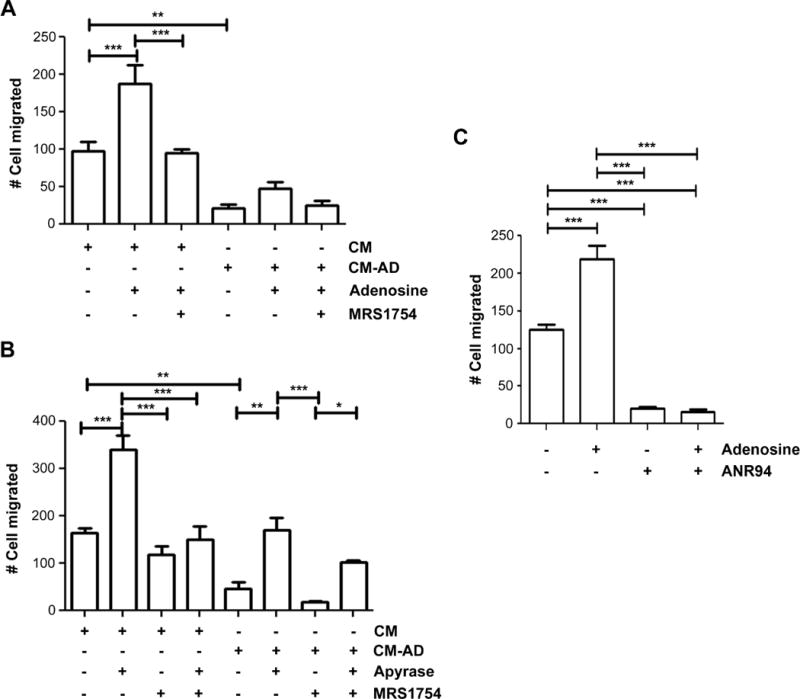Figure 4.

Adenosine increases the migration of human breast cancer cells and this increase is attenuated by an adenosine receptor antagonist. (A) Adenosine and a P1 adenosine receptor antagonist increase the migration of MDA-MB-231. MDA-MB-231 breast cancer cells were incubated in CM collected from MLO-Y4 cells treated with (CM-AD) or without (CM) 20 μM AD for 48 hr in the absence or presence of 200 μM adenosine and/or 500 nM of MRS 1754. The numbers of migrating cells by transwell assay were quantified. Data is presented as mean ± SEM, n = 3. **, P < 0.01; ***, P < 0.001. (B) The increased migration of breast cancer cells by apyrase is attenuated by MRS1754. MDA-MB-231 breast cancer cells were incubated in CM collected from MLO-Y4 cells treated with (CM-AD) or without (CM) 20 μM AD for 48 hr and then treated with or without apyrase (5 units/ml) and/or 500 nM MRS 1754. Data presented as mean ± SEM, n = 3. The numbers of migrating cells by transwell assay were quantified. *, P < 0.05; **, P < 0.01; ***, P < 0.001. (C) The antagonist of A2A adenosine receptors inhibits breast cancer cell migration. MDA-MB-231 breast cancer cells were incubated in the presence or absence of 200 μM adenosine and/or 100 μM ANR 94. The numbers of migrating cells by transwell assay were quantified. Data is presented as mean ± SEM, n = 3. ***, P < 0.001.
